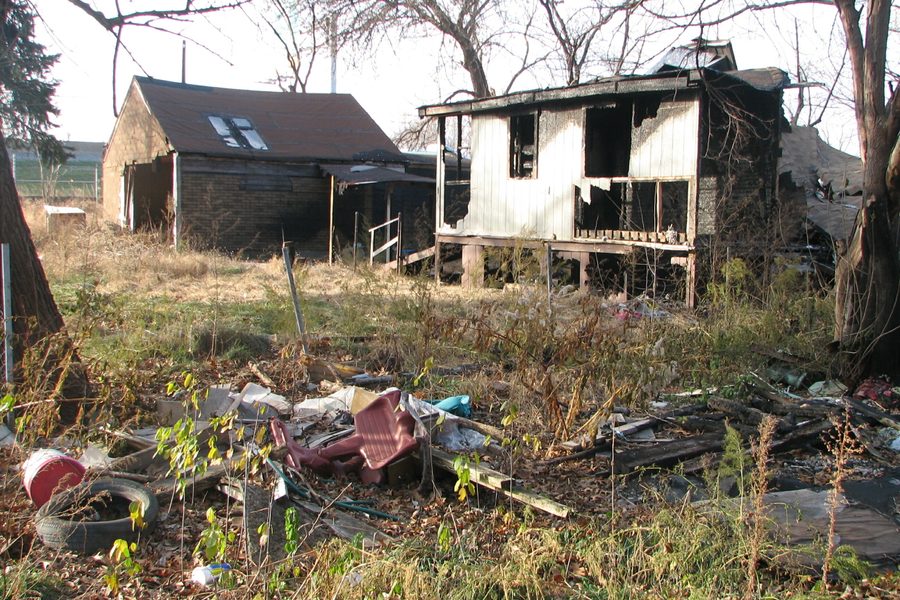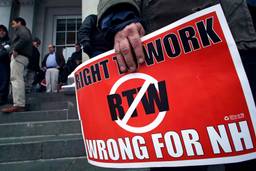
BOULDER, CO — What does it mean for a down-on-its-luck city to “come back”? ”Comeback city” is a catch phrase today, with some of the brightest minds in urban planning studying, experimenting upon and opining about what it takes for a de-industrialized metropolis like Detroit, Cleveland or Albany to transform itself into a vibrant, attractive destination known for its culture and livability rather than one key industry.
I pondered the question of what it really means for a city to “come back” during and after a panel on Rust Belt cities at the Conference on World Affairs in Boulder this week. The conference is an eclectic event in its 64th year that throws together public intellectuals discussing a wide variety of topics with the intent seemingly of raising more questions than answers.
I became increasingly frustrated by some of the early discussion in the Rust Belt panel, which echoed the prevailing rhetoric on this topic — the idea that reviving decaying cities depends upon “rebranding” them and attracting the “creative class” of graphic designers, computer programmers, artists, musicians, writers and hip café and restaurant owners who create a desirable and trendy place to live. It was all about convincing an educated, innovative, hip demographic to move to these cities, and creating universities, information technology hubs, urban farms, arts districts and the like to employ and entertain them. It sounded almost like a competition between cities to lure the coolest and most interesting, in hopes of becoming the next Silicon Valley.
That’s all well and good, I thought, but what about all the people who already live in these cities?
Though many of these cities have hemorrhaged population in the past few decades, they are still home to hundreds of thousands of people. Surely there are plenty of creative, artistic and interesting people among the current residents, who either don’t have the luxury of exploring and developing their talents because of their daily struggle to survive, or who are producing creative and intellectual work that is not recognized or supported by the governmental, cultural and social powers that be.
For just one example of the latter, take the Heidelberg Project in Detroit. Local artist Tyree Guyton gained international fame for his colorful, playful and edgy transformation of blocks of dilapidated housing into one big found-object installation piece. And now corporate and civic leaders have embraced his work. But in the late 1990s when I visited, city authorities were forcing him to largely dismantle the project rather than supporting his creative and attention-grabbing endeavor.
At the Conference on World Affairs panel, I was relieved to hear panelist Dan Ferber – an Indianapolis science journalist and scientist who acknowledged he is a “layman” in urban planning — note that many regular Indianapolis and other Rust Belt residents are just not trained or qualified for the kind of information technology or other high-skill jobs and entrepreneurial enterprises that are idealized in the trendy conception of “comeback cities.”
“What about everyone else other than the creative class?” he said.
Ferber indicated that manufacturing is still an important key to revitalizing the economies of these cities, and now there is the hope of “green” manufacturing of things like wind turbines, batteries, electric cars and other technology that builds on Rust Belt skill sets and infrastructure but helps contribute to a larger shift to a more sustainable national economy.
Much discussion during this panel, as in the larger debate around urban revitalization, focused on the cancerous spread of vacant properties and the way they correlate with and facilitate other social ills like drug dealing, violence, gang activity and downward spiraling property values. One of the panelists, Andrew Butcher, left his hometown of Boulder to start an interesting program in Pittsburgh trying to repurpose vacant lots as green job creators. His small company GTECH finds positive uses for vacant lots including to grow biofuel crops like sunflowers, supplying a clean fuel without displacing forest or food crops.
Butcher’s company and the whole range of urban gardening projects in poor communities nationwide are exciting and inspiring trends that can make a big difference in a number of lives – including the people who live near, get food from or work at these institutions. But even in the best circumstances urban farms on vacant lots are never going to create enough stable, well-paying jobs to make a concrete lasting difference in a city’s poor neighborhoods or a city as a whole.
The same goes for the vaunted “creative class.” Though there’s no doubt they make a city or a neighborhood more fun and lively, even the most successful of the creative class are often barely making a living themselves — in most cases they are not employing large numbers of people or pumping huge amounts of money into the local economy.
Ultimately I don’t think that in turning cities around, there is any replacement for solid employment bases that hire large numbers of people of varying skill levels with the kinds of respectable wages and benefits that allow them to buy homes, raise families, participate in a vibrant local economy and look forward to a decent retirement. That could be manufacturing like the days of old, hopefully with a green component involving clean energy, recycling or other sustainable realms; and also public sector service, education, healthcare and infrastructure jobs.
Unfortunately, so many cities and states are scaling back and privatizing their public sector work, replacing once-solid full-time union jobs with nonunion, often part-time contract work with much lower wages and benefits. While governmental attention to and support of sustainable micro-entrepreneurial ventures like community gardens is usually positive and well-meaning, to me it can also smack of green-washing the same old cut-throat bootstraps mentality: where people are told they can make it big through hard work and ingenuity — starting their own business! — even as we strip away the safety nets and social contracts that helped foster some of this country’s proudest achievements.
An essay by aforementioned “public intellectual” Richard Florida on the brain drain of talented young people from Pittsburgh notes that the creative class as he defines it “share a common ethos that values creativity, individuality, difference, and merit.”
Those are all admirable qualities, of course. But they can also be buzzwords for the Ayn Rand-ish idea that when people don’t succeed, it’s because they lack these qualities.
Check out what Florida wrote about New Orleans, which is ranked third-to-last in a list of the most-creative and least-creative major U.S. cities included in his essay. The idea that New Orleans, of all places, could be considered un-creative and not adequately tolerant or diverse clearly shows the rigid class — and by extension, racial underpinnings — of his definitions; and the idea that creativity is only validated when it spawns investment and profit. Florida’s essay is ridiculous and offensive in other ways as well, including when he notes that “bag ladies” are a valuable addition to neighborhoods because they add local color and a more “real” experience for the creative class.
Stuck in old paradigms of economic development, cities like Buffalo, New Orleans, and Louisville struggled in the 1980s and 1990s to become the next “Silicon Somewhere” by building generic high-tech office parks or subsidizing professional sports teams. Yet they lost members of the creative class, and their economic dynamism, to places like Austin, Boston, Washington, D.C. and Seattle — places more tolerant, diverse, and open to creativity.
Meanwhile even as unemployment is high and people are indeed leaving these disinvested cities, there are growing public and private industries like health care and computer-operated fabrication that can’t find enough appropriately skilled workers. This is where I think cities could “come back” a lot more quickly by finding ways to provide marketable training and education to unemployed and unskilled current residents, rather than trying to dress themselves up to attract newcomers.
For example,although he has moved to privatize and cut jobs and services in various sectors, Mayor Rahm Emanuel’s administration is on the right track with efforts to improve the City Colleges in Chicago by focusing several low-cost city colleges specifically on healthcare, computer science and other training directly tailored to job market needs.
Also in Chicago, publicly and privately funded training centers like the Greater West Town Community Development Project and the National Able Network offer subsidized courses preparing out-of-work residents for available jobs. The West Town group’s focus includes the warehousing and logistics industry, a quickly growing sector in the Chicago suburbs and many cities nationwide.
This website has carried many posts about the abusive and allegedly illegal behavior of companies in this industry. But workers can get these jobs with relatively little training and many say they consider the work challenging and fulfilling. As a key part of global manufacturing networks, the logistics industry will only continue to grow. So governmental mandates, voluntary corporate behavior and public pressure leading to better wages and working conditions could mean the logistics industry or similar industries might help revive cities in a big way.
Ultimately I think the important thing in all this talk of helping cities come back and reinvent themselves is remembering that the most important parts of a city are the people who already live there and made the city what it is over the course of generations.
There’s nothing wrong with attracting new people, obviously – all cities are shaped by successive waves of immigrants – but it’s a certain very narrow type of new person they want. I don’t think any of the planners and civic leaders are envisioning throngs of homeless, unemployed or low-skilled workers moving into their cities. This obsession with attracting the right kind of new residents is just a recipe for large-scale gentrification (or worse) that threatens to erase what made a city special and vibrant in the first place.
Rather than becoming the latest hot destination for the itinerant creative class, the true challenge for civic leaders and visionaries is to nurture and leverage the latent talents and potential of the disenfranchised people who have been there all along.

I hope you found this article important. Before you leave, I want to ask you to consider supporting our work with a donation. In These Times needs readers like you to help sustain our mission. We don’t depend on—or want—corporate advertising or deep-pocketed billionaires to fund our journalism. We’re supported by you, the reader, so we can focus on covering the issues that matter most to the progressive movement without fear or compromise.
Our work isn’t hidden behind a paywall because of people like you who support our journalism. We want to keep it that way. If you value the work we do and the movements we cover, please consider donating to In These Times.
Kari Lydersen is a Chicago-based journalist, author and assistant professor at Northwestern University, where she leads the investigative specialization at the Medill School of Journalism, Media, Integrated Marketing Communications. Her books include Mayor 1%: Rahm Emanuel and the Rise of Chicago’s 99%.







